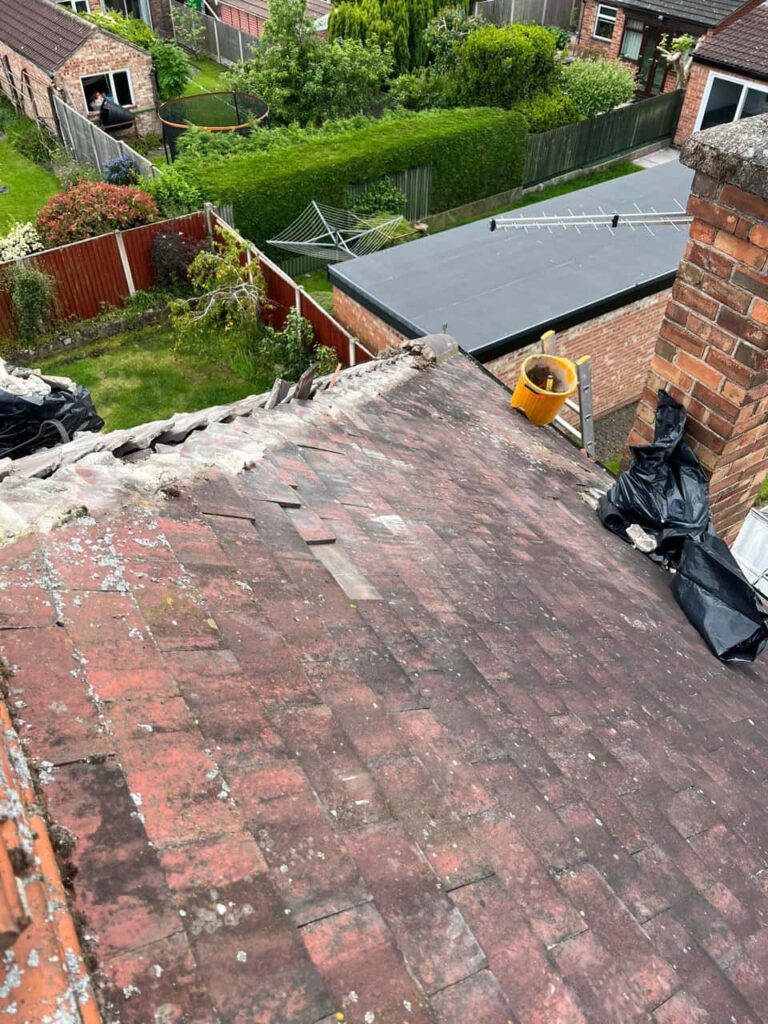Chimney flashing plays a vital role in keeping your roof watertight and your home protected from leaks. It forms the seal between your chimney and the roof surface, preventing rainwater from penetrating through vulnerable joints. However, when flashing fails, it often leads to one of the most common sources of roof leaks. For property owners in Wednesbury, West Midlands, knowing the signs of faulty flashing and how specialists like Wednesbury Roofing Repairs address the problem can save you from serious structural issues later on.
Understanding Chimney Flashing
Flashing is the thin layer of metal—usually lead or aluminium—installed around the base of a chimney where it meets the roof. Its purpose is to divert water away from the join between the brickwork and roof tiles. Without effective flashing, rain can easily find its way inside, leading to damp patches, timber rot, and even internal ceiling damage.
There are typically two main components involved:
- Step flashing – Embedded into the mortar joints of the chimney and overlapping the roof tiles.
- Counter flashing – Covers and seals the top edge of the step flashing to create a watertight finish.
When properly fitted, the two work together to create a long-lasting barrier against water ingress. But if either fails, even a small gap can cause significant damage over time.
Common Chimney Flashing Faults
Flashing issues are among the most frequent problems identified during roof inspections in older and newer properties alike. Below are the main types of faults that Wednesbury Roofing Repairs often encounters:
1. Cracked or Deteriorated Lead Flashing
Lead is durable but not indestructible. Over years of weather exposure, it can crack, split, or lift away from the surface, allowing water to seep through. Temperature fluctuations in the West Midlands can cause the metal to expand and contract, which often accelerates this deterioration.
2. Poor Installation
Incorrectly fitted flashing is a leading cause of roof leaks. In some cases, contractors may use nails or adhesives instead of embedding the flashing properly into mortar joints, resulting in early failure. The smallest installation error can compromise the entire system.
3. Loose or Missing Mortar Joints
Over time, the mortar securing the flashing to the chimney can crumble due to weathering. Once the mortar loses grip, the flashing shifts and creates openings for water penetration.
4. Corrosion or Rust
Metal flashing that isn’t lead-based may corrode over time, especially if water pools near the chimney base. Corrosion weakens the flashing, causing holes or thinning that leads to leaks.
5. Inadequate Overlaps or Sealant Failure
Flashing relies on precise overlaps and strong sealants. If the overlaps are too short or sealants have deteriorated, water will find a way through, particularly during heavy rainfall or snow melt.
Signs Your Chimney Flashing Might Be Failing
Homeowners in Wednesbury should be aware of key warning signs that suggest their chimney flashing might need attention. These include:
- Damp patches appearing on the ceiling or around the chimney breast.
- Discoloured or peeling wallpaper near the chimney area.
- Water stains running down internal walls after rain.
- Moss or algae growth around the base of the chimney.
- Visible cracks, gaps, or lifting edges on the flashing.
Spotting these early can help prevent more costly repairs later on.
How Wednesbury Roofing Repairs Fixes Flashing Faults
When chimney flashing goes wrong, a thorough and professional repair approach is essential. At Wednesbury Roofing Repairs, we follow a systematic process to ensure every flashing issue is resolved with long-lasting results.
1. Inspection and Assessment
Our roofers begin with a detailed inspection to identify the root cause of the leak. We check not only the flashing but also the surrounding tiles, chimney pointing, and roof valleys to ensure no related issues are missed.
2. Removing Old or Damaged Flashing
Damaged sections of lead or metal flashing are carefully removed to prevent further disruption to the roof structure. We ensure all old mortar and debris are cleared to create a clean base for the new installation.
3. Installing New Flashing
We fit new step and counter flashing securely into the chimney mortar joints, ensuring correct depth, alignment, and overlap. Each section is dressed tightly to the roof surface for a perfect seal.
4. Sealing and Weatherproofing
High-quality roofing sealants or lead dressing compounds are applied to reinforce the watertight seal. This provides added protection against future water ingress and weather damage.
5. Final Inspection
A full post-repair inspection confirms that all joints are fully secure, neatly finished, and completely weatherproof. We ensure the new flashing blends seamlessly with the existing roof for a clean, professional appearance.
Preventing Future Flashing Problems
Once repaired, homeowners can take a few simple steps to keep their chimney flashing in good condition:
- Schedule annual roof inspections, especially after harsh weather.
- Check for loose mortar or signs of water staining in your loft space.
- Keep gutters and roof valleys clear to prevent water pooling around the chimney base.
- Avoid applying sealants or patches yourself, as this can mask the issue rather than fix it.
Proactive maintenance goes a long way in extending the lifespan of your roof and keeping your home dry all year round.
Conclusion
Faulty chimney flashing is one of the most common—and preventable—causes of roof leaks. Whether it’s due to ageing lead, poor installation, or damaged mortar joints, addressing the problem early ensures your roof remains secure and watertight. For reliable and professional flashing repairs in Wednesbury, West Midlands, homeowners can count on Wednesbury Roofing Repairs to restore their chimney’s integrity and safeguard their property against future leaks.
Call us on: 0121 827 1893
Click here to find out more about Wednesbury Roofing Repairs
Click here to complete our contact form and see how we can help with your roofing needs.

